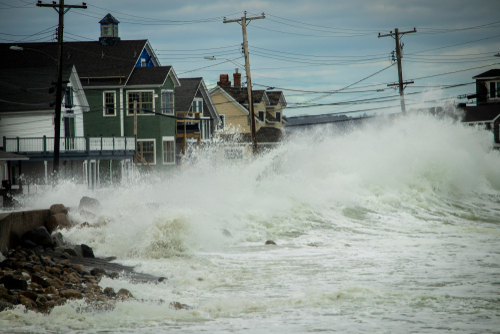
The Defense Advanced Research Projects Agency (DARPA) has established a new initiative designed to protect military installations from coastal storm damage and flooding.
DARPA’s new Reefense program seeks to develop biological and engineered reef-mimicking structures to mitigate wave and storm damage and reduce the ecological impact of current coastal protection measures, including bulkhead and coastal seawalls. These solutions may reflect wave energy, exacerbate flooding, create downstream sediment loss, and restrict water exchange.
The Reefense program involves the creation of custom wave-attenuating base structures, which will promote coral or oyster settlement and growth. The structures will be self-sustaining and address the infrastructure-related impacts of sea-level rise over time. Recent innovations in materials science, hydrodynamic modeling, and adaptive biology will be deployed to optimize these structures.
“Reefense takes the novel approach of integrating structural engineering, reef health, and adaptive biology to create reef-like ecological systems,” Lori Adornato, Reefense program manager, said. “These structures will help significantly reduce infrastructure maintenance costs, promote ecosystem health, and strengthen DoD’s ability to maintain its infrastructure and military readiness.”
The five-year program will be divided into three technical areas. The first will focus on the base structure and component materials to provide immediate wave attenuation and promote the establishment and growth of marine life. The second will promote rapid recruitment of the non-reef building organisms needed to protect the reef. The third will focus on adaptive biology for coral and oysters to ensure compatibility with a changing environment for greater long-term resilience.
The exact site locations have not yet been selected, but it is anticipated that they will be on the U.S. Gulf Coast, South Florida, and perhaps the Caribbean region.
“We see a great potential for the Reefense program and performer teams to collaborate with other government and non-governmental organizations that have interest in coastal protection and improved ecosystem health,” Adornato said. “We encourage potential transition partners to engage early in the process.”




